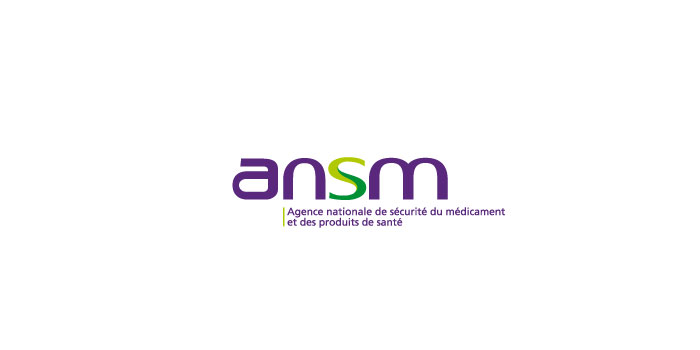Grade 3 anaplastic meningioma associated with chlormadinone acetate
We report the case of a 39-year-old right-handed woman who arose with a first generalized tonic-clonic epileptic crisis. Its medical history included menstrual disorders, which were treated with chlormadinone acetate for 24 months (10 mg/day, 21/28 days, cumulative dose> 5400 mg, treatment in progress). In admission to day 0, the physical examination showed a year ( note of the association: loss of sight despite the good condition of the reception organs ) H omonymous of the upper right quadrant, language and headache disorders. No crisis recurrence was observed after the administration of Leveticetam 1500 mg/day. The dexamethasone 100 mg/day has been introduced.
A cerebral magnetic resonance imaging has shown a unique, well -defined, intraudural, extra -bras lesion, inserted on the Tentorium Cerebelli Tentorium incisure, and reaching the right sinus, suggesting a meningioma (4.1 × 4.1 × 3.7 cm, 31.3 cm3). On the fourth day, a complete surgical resection with coagulation of the affected hardness was carried out. The swelling of the brain required the realization of a duraplasty and the non -replacement of the bone shutter.
Postoperatively, the physical examination showed a hemianopsia ( note of the association: decrease or suppression of the vision in one of the visual field of the two eyes) right homonym, language disorders with Alexia.
The patient was released on the 7th postoperative day with dedicated ambulatory rehabilitation. The histopathological diagnosis , which was confirmed by a central neuropathological examination according to French directives within the French national network Renoclip, has shown an anaplastic meningiom of grade 3 according to WHO (21 mitotic figures/1.6 mm2) without loss of H3K27ME3. We did not find any homozygous deletion of the CDKN2A locus.
Chlormadinone's acetate has been definitively withdrawn. External conformional radiotherapy with intensity modulation was carried out (55 Gy) on the 60 postoperative day.
At 44 months postoperatively, the patient has no recurrence of meningioma and no crisis recurrence under the levetiracetam1500 mg/day (image 1b).
Exposure to the progestin is associated with an increased risk of meningioma in women (ODDS Ratio at 6.6). The association between anaplastic meningioma and the administration of chlormadinone acetate has never been described in detail. The long -term use of large doses of progestins, including chlormadinone acetate, a synthetic derivative of progesterone, is known to promote the development of meningiomas.
The present observation is of practical interest since the hypothesis of an anaplastic meningioma should be considered in patients with meningiomas linked to progestogen.
The long -term prescription of a progestin requires clinical monitoring and systematic and narrow imaging in order to carry out specific neurosurgical and oncological management if necessary.
Funding sources
None.
Previous presentation
No part of this content has been the subject of a preliminary presentation.
Disclosure of interests
The authors declare that they have no competing interests.
Contributions from authors
Alexandre Roux, writing of an important part of the manuscript or figures.
Johan Pallud, Design and design of the study, acquisition and analysis of data, drafting of an important part of the manuscript or figures.
Marc Zanello, writing of an important part of the manuscript or figures.
References
[1] Hoisnard L, Laanani M, Passeri T, Duranteau L, Coste J, Zureik M, et al. Risk of Intracranial Meningioma With Three Potent Progestogens: A Population-Based Case-Control Study. EUR J Neurol 2022; 29: 2801–9, http: //dx.doi.org/10.1111/ene.15423.
[2] Peyre M, Gaillard S, de Marcellus C, Giry M, Bielle F, Villa C, et al.Progestin-associated shift of meningioma Mutual Landscape. Ann Oncol2018; 29: 681–6, http://dx.doi.org/10.1093/annonc/mdx763 .
[3] Champeaux-deple C, Weller J, Froelich S, Sartor A. Cyproterone Acetateand Meningioma: A Nationwide-Wide Population Based Study. J Neurooncol2021; 151: 331–8, http://dx.doi.org/10.1007/S11060-03672-9 .
[4] Malaize H, Samoyeau T, Zanello M, Roux A, Benzakoun J, Peeters S, and Al.evolution of the Neurosurgical Management of Progestin-associated Menin-Giomas: A 23-Year Single-Center Experience. J Neurooncol 2021; 152: 279–88, http: //dx.doi.org/10.1007/S11060-021-03696-9.
[5] Roux A, Tauziede-Spariat A, Zanello M, Gareton A, Malaize H, Ben-Zakoun J, et al. Symptomatic progestin-associated atypical gradeii meningioma. A first report. Neurosurgery 2020; 66: 174–8, http: //dx.doi.org/10.1016/j.Neuchi.2019.12.013.
[6] Graillon T, Boissonneau S, ARTA RA, BOUCEKINE M, Peyrière H, Meyerm, et al. Meningiomas in Patients with Long-Term Exhibition Toprogestines: Characteristics and Outcoma. Neurosurgery 2021; 67: 556–63, http: //dx.doi.org/10.1016/j.neuchi.2021.04.018.
- Rouxa, B, ∗
- Palluda, B, 1
- Zanelloa, B, 1a
Service of Neurosurgery, GHU Paris Psychiatry and Nannerosciences, site Sainte-Anne, 75014 Paris, France-Université Paris Cité, Institute of Psychiatry Andneuroscience of Paris, Inserm U1266, 75014 Paris, France ∗





